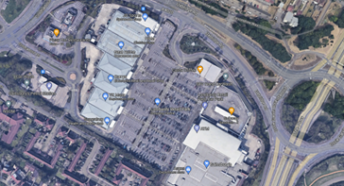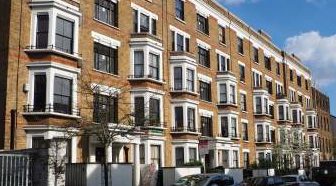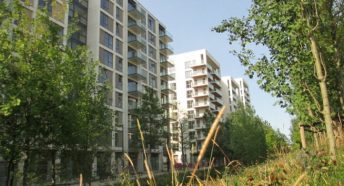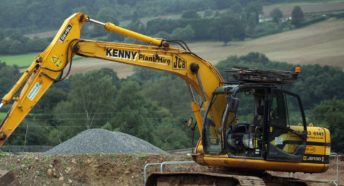Space for over 280,000 homes on brownfield sites ‘tip of the iceberg’
Official ‘brownfield registers’ seriously under-estimate the amount of derelict, vacant and previously built on land that could be used for new housing in London. We need to prioritise the reuse of such sites for housing to revitalise run-down areas and protect the Green Belt and other vital green spaces.
Space for over 280,000 homes on brownfield sites in London ‘just the tip of the iceberg’ say local campaigners
London’s brownfield land is a renewable resource that can provide a steady pipeline of new homes
A new analysis of councils’ Brownfield Land Registers, published today (25 March) by the Campaign to Protect Rural England (CPRE), demonstrates the huge potential that building on derelict and vacant land has for the regeneration of towns and cities, as well as the provision of new homes [1].
The analysis shows that in London alone there is space on suitable ‘brownfield land’– land that has been previously built on and now sits derelict or vacant – to accommodate over 287,000 homes [2]. Almost two thirds of this land is ‘shovel ready’ and could make an immediate contribution to meeting housing need, having been confirmed as deliverable within five years. And CPRE London believes these figures seriously underestimate the actual amount of brownfield land available.
Prioritising re-use of brownfield land, which councils have shown is ready and waiting to be redeveloped, would not only help to transform run-down areas, and provide more homes, but also prevent the loss of precious countryside and green spaces for housing.
Neil Sinden, Director of CPRE London said:
“London’s Green Belt is under growing threat of development with Government Inspectors only this week [3] questioning the approach to meeting housing needs being taken by the Mayor in the new London Plan. The Plan currently proposes strict protection of Green Belt and Metropolitan Open Land and prioritising the use of brownfield land which we strongly support. Yet developers and others are calling for Green Belt protection to be relaxed.”
Our new report shows just how much capacity there is to provide housing on brownfield land in London – enough for 10 years housing supply at recent rates of housebuilding. And this is just the tip of the iceberg. Our recent work in Enfield [4] suggests that actual brownfield capacity is well over 10 times that suggested by the figures collected by councils in their Brownfield Land Registers. And if homes are built at sustainable densities, the capacity would be even greater.
Neil Sinden concluded:
‘We now have the opportunity to provide the new homes London so desperately needs by revitalising run-down urban areas while safeguarding our precious green spaces. To achieve this we need a positive brownfield-first approach coupled with the strict protection of the Green Belt and Metropolitan Open Land proposed in the London Plan’.
ENDS
Notes to editors
- CPRE, State of Brownfield 2019 – This report will be available on the CPRE website after the embargo has lifted. If required before this, please email philr@cpre.org.uk for a copy.
- Breakdown of key statistics in Brownfield Land Registers in Greater London (All the sites on the registers have been assessed by local planning authorities as being ‘suitable’ for housing development, having had regard to their environmental, amenity and heritage value):.
|
Local Planning Authority |
Number of sites |
Total area (hectares) |
Total minimum housing capacity |
Minimum housing capacity of deliverable sites |
|
|
Barking and Dagenham |
63 |
277 |
23,488 |
15,444 |
|
|
Barnet |
83 |
242 |
18,594 |
15,935 |
|
|
Bexley |
47 |
16 |
1,914 |
1,891 |
|
|
Brent |
112 |
69 |
12,235 |
10,085 |
|
|
Bromley |
61 |
45 |
3,097 |
722 |
|
|
Camden |
97 |
43 |
6,262 |
2,859 |
|
|
City of London |
1 |
0 |
5 |
5 |
|
|
Croydon |
249 |
107 |
11,236 |
8,454 |
|
|
Ealing |
70 |
112 |
7,026 |
6,702 |
|
|
Enfield |
27 |
50 |
2,170 |
2,170 |
|
|
Greenwich |
101 |
133 |
23,478 |
23,023 |
|
|
Hackney |
23 |
5 |
3,374 |
||
|
Hammersmith and Fulham |
14 |
9 |
2,554 |
2554 |
|
|
Haringey |
179 |
161 |
18,800 |
18,800 |
|
|
Harrow |
102 |
102 |
7,634 |
7,586 |
|
|
Havering |
78 |
100 |
12,382 |
9,267 |
|
|
Hillingdon |
84 |
125 |
6,582 |
4,227 |
|
|
Hounslow |
9 |
11 |
1,171 |
1,171 |
|
|
Islington |
83 |
58 |
6,260 |
4,830 |
|
|
Kensington and Chelsea |
50 |
38 |
7,132 |
2,223 |
|
|
Kingston upon Thames |
80 |
39 |
5,707 |
1,235 |
|
|
Lambeth |
36 |
32 |
3,976 |
2,884 |
|
|
Lewisham |
128 |
96 |
16,425 |
13,516 |
|
|
London Legacy DC |
3 |
7.2 |
1000 |
1000 |
|
|
Merton |
83 |
31 |
1,102 |
||
|
Newham |
68 |
9 |
1,245 |
387 |
|
|
Old Oak and Park Royal DC |
41 |
57.6 |
20,505 |
4,715 |
|
|
Redbridge |
186 |
128 |
12,579 |
6,023 |
|
|
Richmond upon Thames |
50 |
79 |
1,980 |
1,491 |
|
|
Southwark |
346 |
65 |
9,547 |
5,221 |
|
|
Sutton |
103 |
48 |
3,265 |
||
|
Tower Hamlets |
26 |
96 |
130 |
||
|
Waltham Forest |
38 |
20 |
3,441 |
3,390 |
|
|
Wandsworth |
175 |
194 |
24,706 |
22,777 |
|
|
Westminster |
101 |
35 |
6,049 |
977 |
|
|
TOTAL |
|
2,997 |
2,642 |
287,051 |
170,185 |
- On Tuesday 26 March Government Inspectors will question the Mayor’s approach to the Green Belt and Metropolitan Open Land at the examination in public of the draft London Plan at City Hall.
- Recent research by CPRE London in the Borough of Enfield found space for at least 37,000 homes on a wide range of types of brownfield land. This is compared to just 2,170 homes identified on Enfield’s most recently published register in December 2017 – see Space to Build in Enfield (February, 2019). The requirement in the regulations for the registers that land should be ‘available for residential development’ and the definition of that term in article 4(2) may result in missing opportunities to make better use of existing developed sites. For example, supermarkets and their car parks could be converted to provide homes whilst maintaining existing uses.
Please call Neil Sinden on 020 7253 0300/07496 805354 for further information







